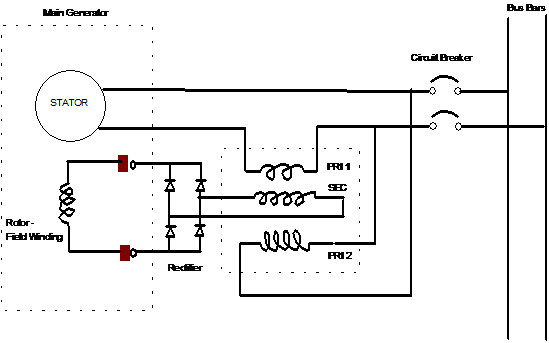Question
Why upon heavy impact loading self excited compounded
alternator provide the best response in limiting voltage dip and
recovery time.
Self excited [Static Excitation] System (or Functional
Type)

Figure 3
The principle of the static or self-excitation system
is that a 3-phase transformer with two primaries, one is shunt and the other in
series with alternator output feeds current from its secondary windings through
a 3-phase rectifier for excitation of the main alternator rotor.
On no-load, the generator excitation is provided by shunt
connected primary which is designed to give sufficient main rotor field current
for normal alternator voltage at no-load.
Reactor coils give an inductive effect so that current
in the shunt winding lags main output voltage by 90°.
Build-up of voltage at starting is assisted by
capacitors which provide a resonance condition with reactors.
On load, the generator current contributes additional
excitation current via the series primary coils.
Variation in load current directly
alter
excitation and rotor field strength to keep voltage approximately right.
In this generator, the excitation system make use of
load current from the alternator to supply that component of excitation current
needed to maintain voltage as load increases.
This component of excitation is a function of the load. Field current is thus forced to adjust
rapidly as load changes.
Voltage disturbances accompanying application or
removal of load are greatly reduced.
Statically excited alternator have
better recovery from voltage disturbance.